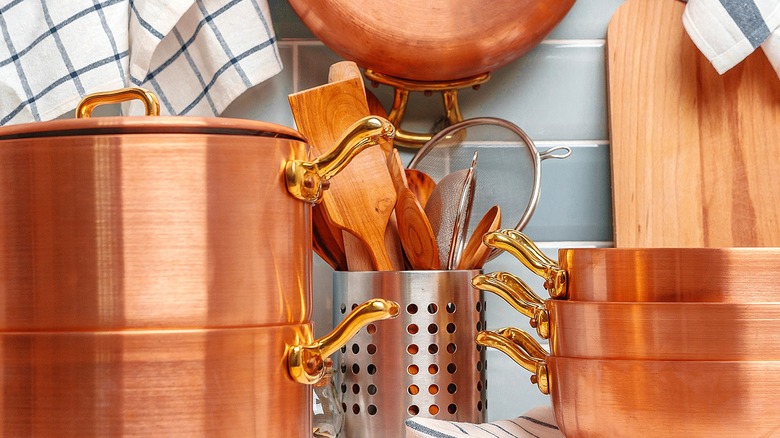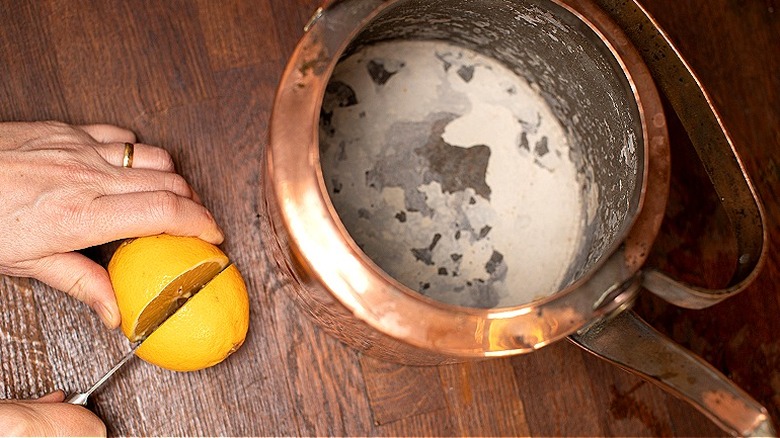The Secret Ingredient To Sparkling Copper Pots And Pans
One of the simplest ways to incorporate copper into your kitchen design is with cookware. Think copper pots and pans hanging from ornate kitchen rails, shining like new pennies. But just how do you keep those pieces of cookware looking so spotless all the time? It turns out one secret ingredient to maintaining copper pots and pans is hiding in plain sight in your kitchen: cream of tartar.
If you regularly bake angel food cake, meringues, or scones, you likely have a bottle or two of cream of tartar on hand. The fine white powder, also known as potassium bitartrate, is commonly used to stabilize whipped egg whites, though its true superpower comes from its acidic nature. Cream of tartar is made from tartaric acid, a byproduct of winemaking.
This acerbity makes it a coveted ingredient in recipes that stretch beyond the confines of cooking and into the world of cleaning. The leavening agent can be combined with lemon or vinegar to remove stubborn ink stains out of clothing, brighten grout, and erase soot marks from fireplaces. However, its ability to clean and restore the luminous look of copper cookware is often regarded as one of cream of tartar's most underrated talents (or cleaning hacks).
Make copper cookware shine with cream of tartar
Even if your copper pots and pans are used more as an aesthetic touch to add warmth and elegance to your kitchen than for actual cooking, they'll lose their luster over time. As copper is exposed to oxygen in the air, it slowly reacts and forms copper oxide. This oxidation creates a tarnish that appears as brown or black marks. However, when copper cookware is used for recipes that include milk, vinegar, or wine, the corrosion may take on a blue or green hue.
To erase layers of tarnish and restore copper's vibrancy, mix together 2 tablespoons of cream of tartar and 1 tablespoon of lemon juice. Next, evenly apply the paste to the surface of your copper cookware and gently rub, paying close attention to any heavily tarnished areas. Finish by using a damp cloth to thoroughly wipe off any remaining cream of tartar cleanser.
Another option is to combine 2 parts cream of tartar and 1 part vinegar and apply the mixture to tarnished copper cookware with a soft-bristled toothbrush. Next, gently scrub the paste on all affected areas, using the toothbrush to get into narrow areas near handles. Once the corrosion has lifted, wipe off the remaining cleaner, and rinse the entire piece in the sink using warm water, or simply use a damp cloth. Be sure to completely dry your cookware with a microfiber cloth, as any residual moisture can cause water marks.

